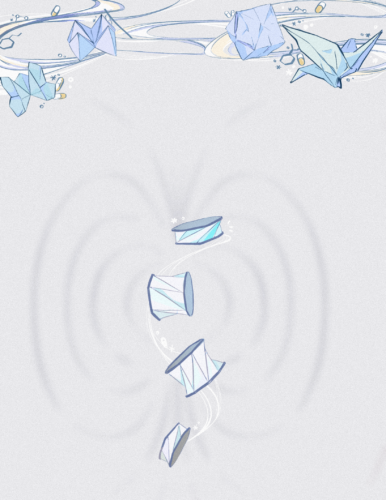Image courtesy of Catherine Kwon.
Black Mirror. Ex Machina. The Terminator. Why does television seem to vilify robots and artificial intelligence as a human invention bound to go wrong? Why are robots always portrayed as a perilous design destined to eradicate the human species? We see this smear of these intelligent machines in the media and pop culture, from movies that follow the expedition of an assassin robot to dystopian shows that alarm their audiences about the dangers of unrestricted technological advancements. However, let us not forget that robots are designed to facilitate human conventions and tasks, with great potential to revamp and advance biotechnology, medical procedures, and clinical treatments.
In one of the latest clinically transformative cases, researchers at Stanford University designed a tiny origami robot capable of various movements in physiological environments to deliver organic cargo and liquid medicine. We often attribute origami to the Japanese paper-folding craft, but this technology fulfills the robot’s multifunctionality based on the geometric features of a specific origami structure: the Kresling. The Kresling is a triangulated hollow cylinder where ‘twist buckling’ a thin cylindrical sheet creates triangular elements throughout the structure. The twist buckling mechanism can be created by folding one sheet slightly higher than the next sheet, then repeating this process along the direction of the twist. Because the Kresling structure is always curved at the folds, the junctions between folds can be radially cut for liquid drug release. The buckling effect and high geometrical symmetry of the design allow for the robot’s sphere-like ability to roll, flip, and spin.
“The Kresling origami is a special design that couples torsion—a twisting motion—and compression, which provides us with the foldability to develop a pumping mechanism for targeted drug delivery,” said Renee Zhao, assistant professor of mechanical engineering at Stanford University and one of the leading scientists on the project. The robot is prepared by attaching thin magnetic plates to the ends of the Kresling structure, which generates a twisting force as the robot’s rigid body rotation aligns with the magnetic field.
This all sounds very compelling and groundbreaking, but how does the robot’s origami structure improve the drug delivery process? After all, the robot is not being introduced to a generally dry environment, so why is on-ground locomotion relevant? Zhao and her team at Stanford characterize the tiny robot as amphibious in functionality, meaning that the robot can navigate both complex ground and aqueous environments. “On-ground locomotion is based on the robot’s interaction with a solid surface by rolling and flipping, and aquatic locomotion is based on the spinning mechanism that creates propulsion for the device to swim,” Zhao said. The magnet plates also activate the pumping mechanism to release liquid medicine into the body. For drug delivery, a needle and a liquid medicine container are inserted into the internal cavity of the robot. Once the device reaches the target area, the magnetic plates activate a rotational force to contract the robot, during which the needle punctures the liquid container. Gradually, the Kresling’s internal cavity shrinks and squeezes the liquid medicine out through the radial cuts into the environment. Similarly, the spinning-enabled feature from the magnets also allows for cargo loading and release, which follows the same locomotive process as the pumping mechanism. However, it first propels the robot to absorb solid objects from an environment, stores those objects in the internal container, and finally releases them via pumping once the robot reaches the target area.
Despite the relatively small size of the millirobot, the internal cavity of the Kresling is still widely unoccupied, even after installing the needle and liquid container. Researchers have thus built sensors and cameras in the cavity to direct movements and record specific environmental conditions. “The internal cavity of the robot can actually be used to integrate other functional components, like cameras for biopsies and biosynthetic tissues to stop internal bleeding,” Zhao said. The potential biomedical applications for using the robot and its internal compartments are vast.
Versatility, agency, and efficacy all seem to be leading features in the architecture of these innovative devices. Robots like the Kresling origami should remind us that robots were created to help us, not harm us. To this point, let’s stop giving robots such a bad rap in pop culture, especially if these cute, foldable robots could be designed to ultimately save our lives.

